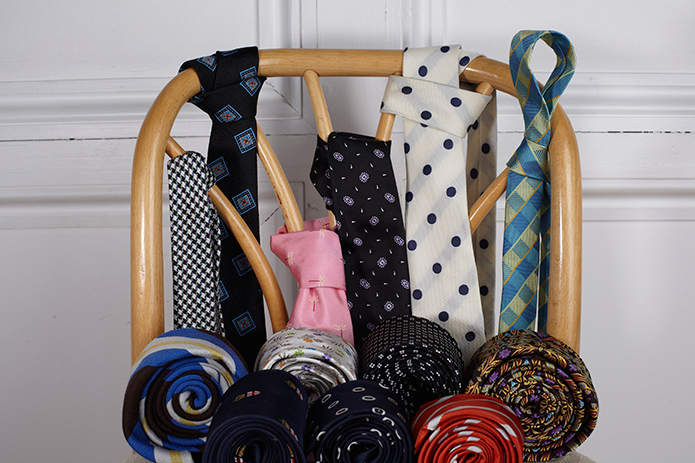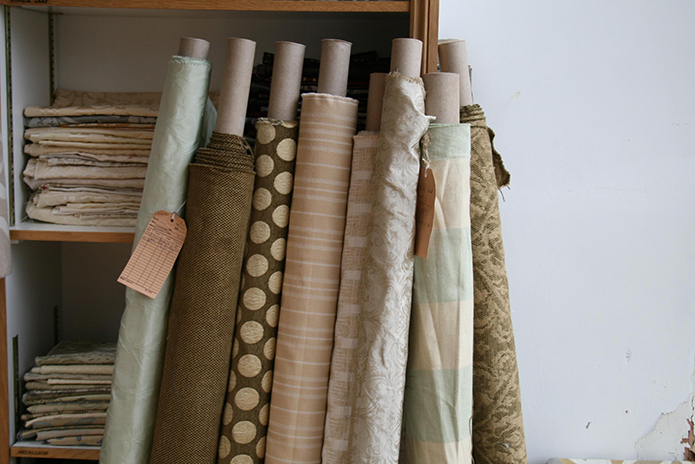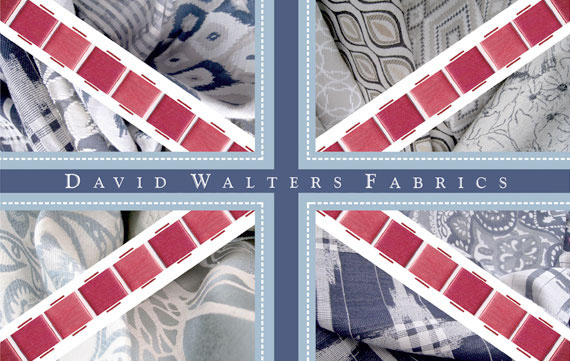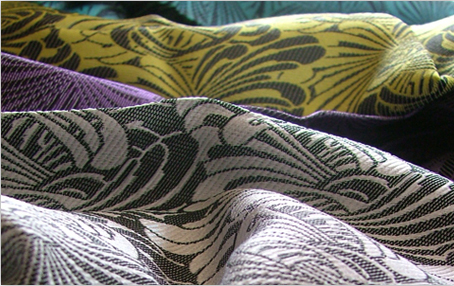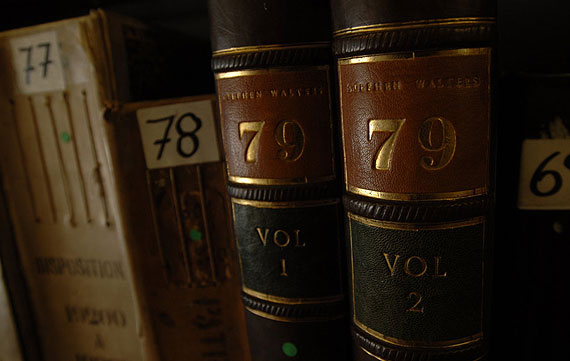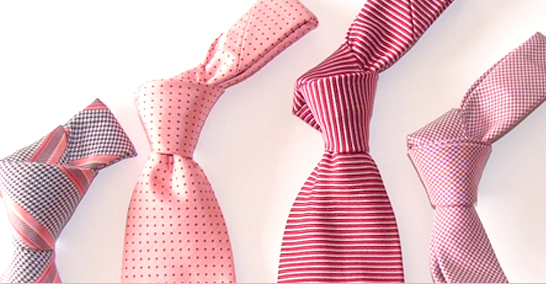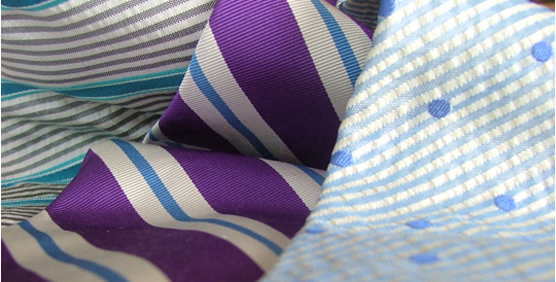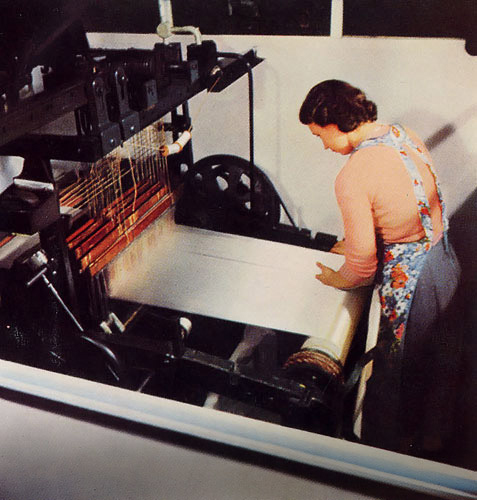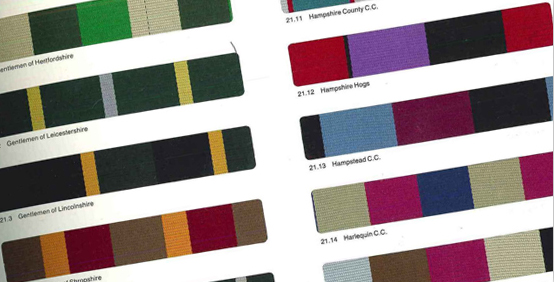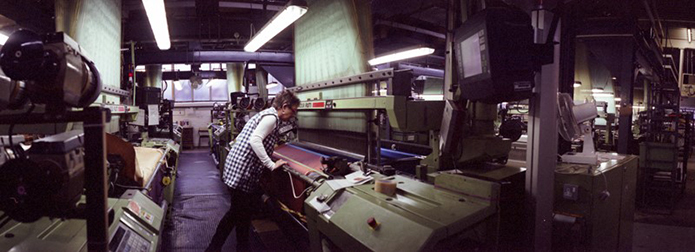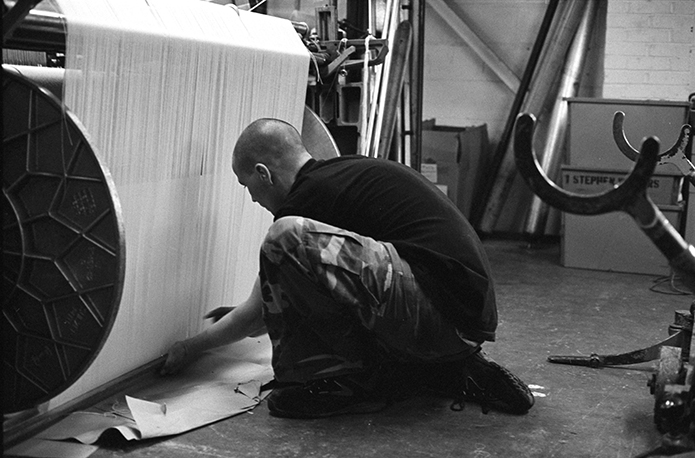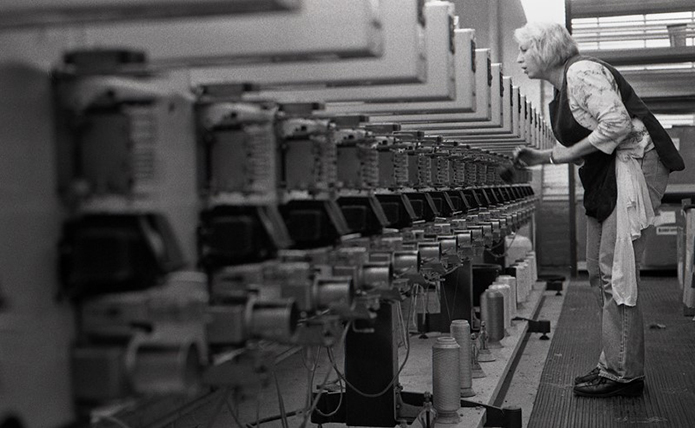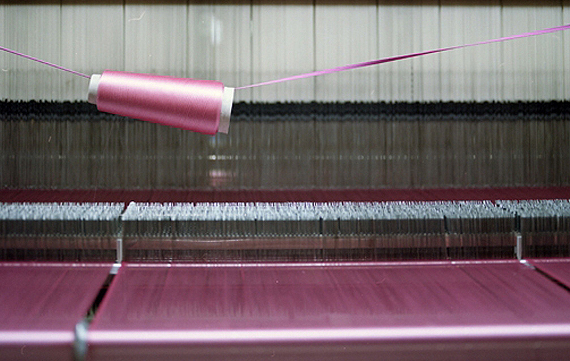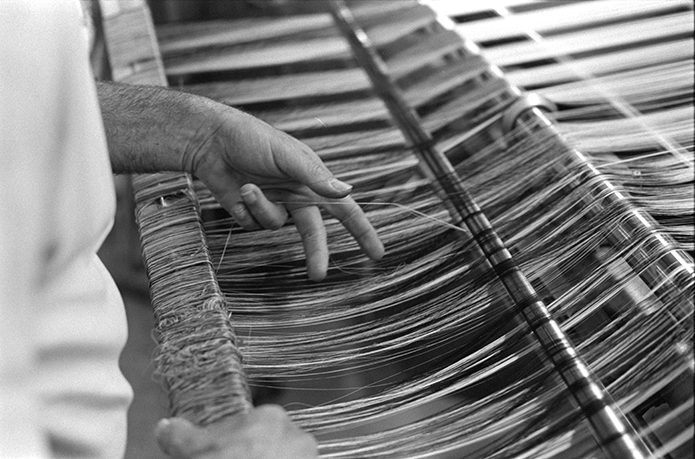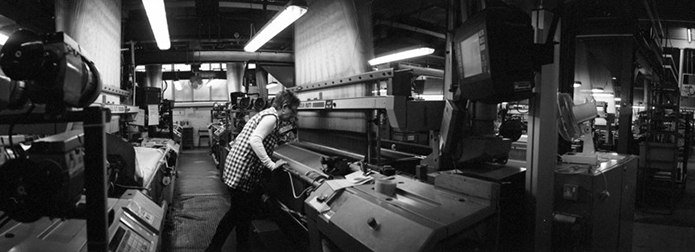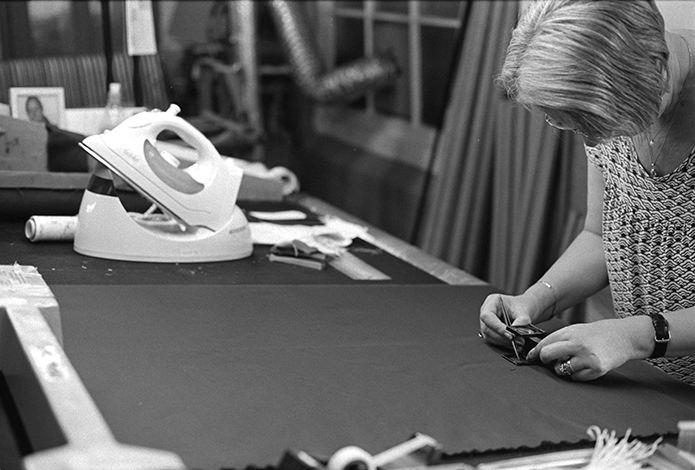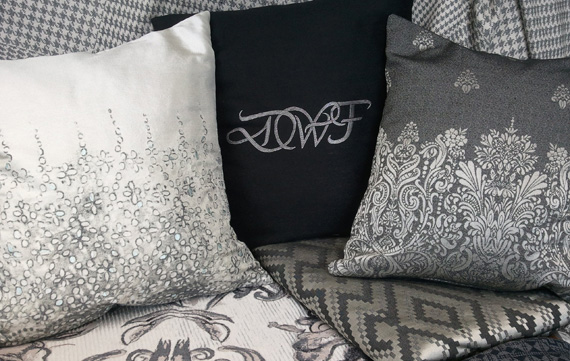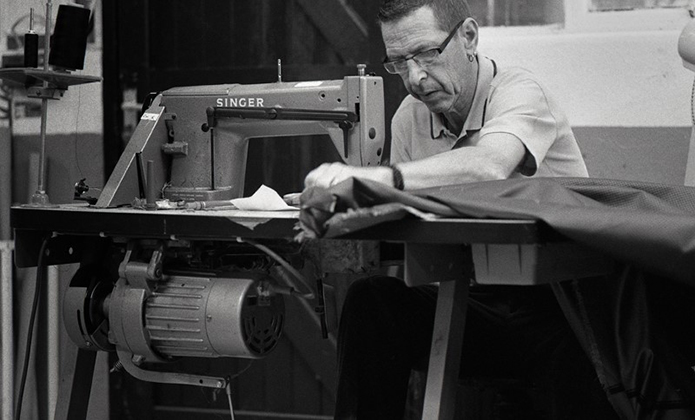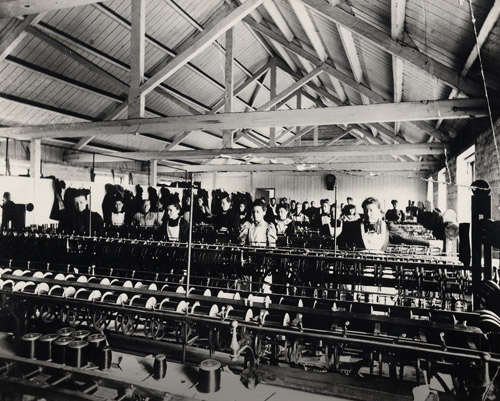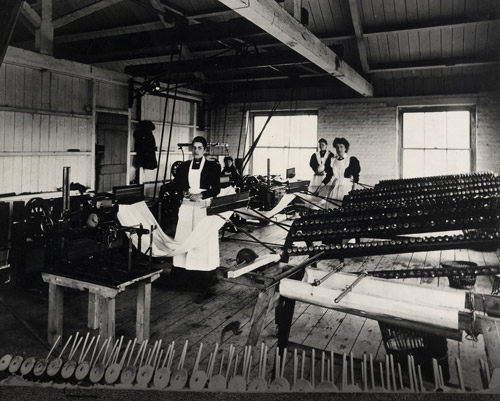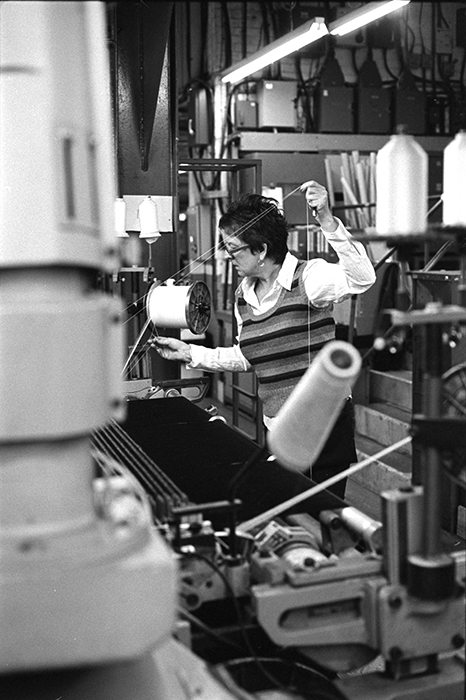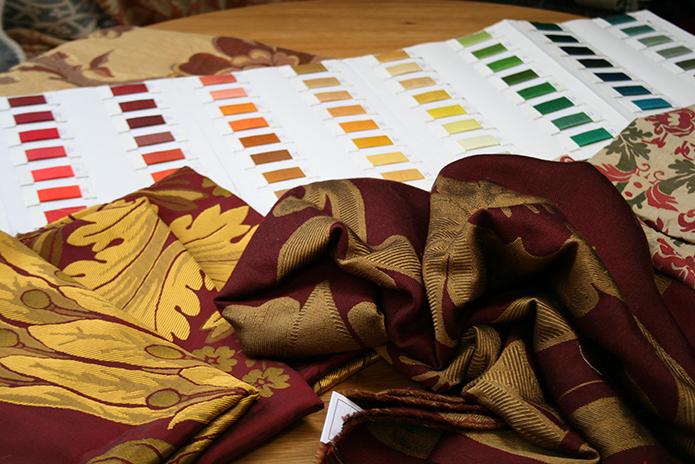
Silk has always been synonymous with the highest echelons of quality, as the traditional idiom about sow’s ears and purses illustrates, and has set the standard in luxury fabrics for millennia, originating from Ancient China. Silk has extraordinary qualities, many of which can’t be reproduced by man-made fibres; it is simultaneously strong (silk thread is stronger than an equivalent strand of steel) yet soft and lustrous, is absorbent yet highly resistant to mould and mildew, has warmth without weight, and is very elastic. Silk is very hard to produce, and takes careful and complex processes to turn the dull filament of a silkworm cocoon, thinner than a hair, to form silk thread, or yarn. And that is just the start of the process, as the yarn still has to be expertly crafted into the finished, luxurious cloths with its bright colours and brilliant designs. It is this quality, and craft tradition, that is synonymous with Stephen Walters & Sons of Sudbury, Suffolk, together with a subtle, yet strong thread of contemporary innovation.
The English silk industry emerged from a declining woollen tradition in 18th Century Suffolk. Silk was produced, first in simple weavers cottages and then in mechanised ‘manufactories’, utilising local textile labourers as well as newly settled silk weavers arriving from East London; Spitalfields in the case of Stephen Walters & Sons. You could say that the English ‘silk road’ has been travelled from Suffolk to London for several centuries. It is this centuries-old British craftsmanship that demarcates English silk, with its longevity and classic matt finish, from cheaper fabrics from around the world, and it is this attention to design and detail which has enabled Stephen Walters & Sons to, over recent years, supply the world’s most prestigious fashion houses, and not just survive, but flourish, at a time when many traditional British fabric manufacturers have either closed down or outsourced production to the Far East.
Julius Walters is the ninth-generation of this family-run company and retains a modest status which belies the international success and deserved esteem held for Stephen Walters & Sons which embraces and marries the most modern of technologies with artisanal heritage, including 200 year old archives, to produce world renowned silk. An insight into the modern silk industry, with its most historic of roots, is enabled here. Enjoy an interview with Julius Walters…
Firstly, for those readers who aren’t familiar with Stephen Walters, please can you tell us about the company and the types of fabrics that you produce?
Most readers won’t be familiar with Stephen Walters as we produce fabrics used to create final products which are sold under high-end brands rather than our own. The company is almost 300 years old, having been established back in 1720. We are weavers; designing and weaving luxury silk and mixes of noble yarns, such as wool, cashmere, linen and cotton in order to make ties, scarves, accessories and apparel. A separate division of the company is David Walters Fabrics, which produces bespoke furnishing fabrics for interiors; such as silks for drapes and walling, upholstery and even flame proof fabrics for hotels etc.
In the context of your history, David Walters Fabrics is a relatively new brand for Stephen Walters. Can you briefly explain why you created two separate brands for your silk?
We found that the two businesses are very different and it was decided about thirty years ago to establish David Walters as a separate entity based on another site. Whilst levels of care and quality remain the same, as they are both developing and weaving luxury fabrics, the customers and products are distinctly different and separate and the fabrics are produced in different ways.
What are Stephen Walters’ design influences and processes, both artistically and technically, for new designs, and to what extent are your styles dependent on what your customers ask for?
Design is a core element of our fabric and intrinsic to the finished products. We create new designs for the market each season which are shown to customers, after which we will start producing the fabric for their new collections. Whilst we do have a large design team, with a dozen full-time designers, we do customise and develop fabrics for a customer where they have originated their own ideas in the form of artwork, often on paper. These designs can be inspired from our archive or created entirely from scratch. Translating the flat pattern into a three dimensional woven structure is very complex and the process is down to the skill of our creative and technical designers who design the 3D weave structure into the fabric. After all, it’s not just how the design looks on paper, but how they are assembled, which is key.
How much inspiration do you and your clients take from your extensive archive of patterns that relates to silk woven over two hundred years ago?
Our archive is a fantastic asset and reference from which we draw on a lot. Since the early 1800s, our predecessors have stored many thousands of swatches and artwork in hundreds of big leather-bound books, all in their natural state. There is a tremendous wealth of ideas which we can use for future designs, either faithfully reproducing them or reinterpreting them in a more contemporary way. Many of our customers travel to the mill to develop patterns of their own, sometimes spending days at a time there. We also travel a great deal and work very closely with the market which allows us to identify trends and create new ideas and collections for forthcoming seasons. We do draw on historical designs contained in the archive, although, of course, we also take inspiration from contemporary events, trends and exhibitions.
I’m assuming changes in fashion in recent years, particularly the notion of dressing down at work, instead of wearing a tie, will have no doubt affected the traditional demand for silk ties. In what way has this affected your business model, and have you diversified into other areas to compensate for this?
There has certainly been a fashion of people moving away from wearing ties in the workplace, but likewise there is a trend amongst the younger generation to dress up wearing ties when going out in the evening. The ties we make are beautifully crafted luxury items and people wearing them are wearing them for pleasure, and not necessarily as a work uniform, so we have been insulated from trends to a degree in the luxury end of the fabric market. Also, we have such a long history making many different items for different purposes, such as apparel and furnishings, that trends in tie-wear have been offset by growth in other areas; for instance while the traditional tie is not as popular, demand for scarves has increased significantly in recent years.
For those readers that aren’t familiar with silk as a material, please can you describe what it is and how it differs to other forms of textile, in terms of its qualities, and to the touch, and what sort of garments is it typically used for?
Silk, generally, is unparalleled as a luxury fabric. It is very highly regarded and in the past was reserved for just royalty to wear, although of course this is no longer the case. It is hard to mass produce, which makes it scarce. It is also a versatile fibre, for instance there are various weights of silk, it can be a luxurious, rich, heavy fabric or turned into a lightweight, sheer Chiffon where the yarn is spun very fine. It can also have different appearances, either a matt, slubby Tussah silk or glossy Faille, and many other versions besides.
In the past couple of centuries, silk has been very popular in the form of taffeta, where there was a long tradition of it being used for mourning dress in the Victorian era, but also for umbrella and parasol silks. In the early 1900s silk rayon became fashionable, and in the 1940s, silk was used extensively for making parachutes, which certainly helped the company to survive during the 1940s.
Stephen Walters silk has also been used for a number of prestige projects for the Royal Family, such as the robe and coach for the coronation of Queen Elizabeth II in 1953, the gown for the investiture of Prince Charles in 1969, the wedding dress for Princess Anne in 1973, the Alexander State Coach and the wedding dress for Princess Diana. However, our silk is not reserved exclusively for royalty, and has been embraced by the fashion industry in making silk dresses, tailoring, scarves and ties, amongst other garments, as well for interior furnishings.
Faced with low-cost competition from Far Eastern rivals, how has Stephen Walters remained so successful given the pressure from cheap silk yarn imports, which has accounted for the demise of other silk producers?
The design element has been absolutely vital for us; our exclusive designs along with the unique quality of the English-woven silk differentiate our products from other woven fabrics from abroad.
We only use highest grades of silk and we have our own unique specification of yarn. English tie silks tend to be more matt, with a drier handle, meaning they are less shiny than those from China. Take the traditional Repp striped tie fabric as an example; the true British Repp tie uses a crisp fabric, very clear with bright colours. It is only possible to get this from the UK due to the yarns that are used and how the looms are set up and run, so a combination of things. Design-wise, a block stripe is not unique, but the quality comes through in the way that it is made.
It is worth noting that in the past twenty years we have seen China go from producing only a small percentage of the world’s silk to the majority. However, despite this, we sell our silk to China. People there are beginning to appreciate the difference between the silk made in the Far East and that which is designed and produced in Britain.
I also believe our unparalleled service, and reliability in offering our customers what they want, when they want it, also contributes to our continued success.
How important is maintaining production in Britain, and specifically England, to your brand?
It is very important to us. For reasons of design, quality, service and reliability, it is only possible for us to be based in Britain. An immense amount of knowledge has been built up by our craftsmen, and the quality of our design and production depends entirely on the creative skills our artisanal workforce being able to design and weave our luxurious fabrics.
The silk industry in Suffolk embraced the use of state-of-the-art Jacquard looms when they were first introduced two hundred years ago, and kept updating technology as and when new inventions came along. How important is embracing the use of new technologies in the silk industry today for Stephen Walters, whether that is in production or design?
Before the Jacquard loom was invented, silk would have been handwoven, so the invention of a mechanical loom using punchcards to control the pattern of the loom’s weave by storing different designs, a forerunner of the modern computer, was a huge technological advancement. It was inevitable that an electronic version of the Jacquard loom would develop which would be controlled electonically, rather than using punchcards.
We were also early adopters of the rapier jacquard loom in 1968 where, instead of a traditional shuttle, a rapier or gripper is used to transfer the thread. In the early 1970’s we were one of the first users of CAD designing which is commonplace today. We subsequently installed some of the first electronic jacquard looms in the world.
We believe that it is absolutely crucial that we invest in new technology for our business to survive and prosper.
In fact, our business today runs off a fully integrated IT system which gives us complete visibility and transparency over the business, which is essential given we have short runs of custom orders, so the level of complexity is very high. Our IT system allows us to react quickly to customer demands, it enables improved reliability, aids in production, and allows us to monitor and improve the quality of our fabrics.
Whilst we remain a very traditional skills-based business, we use the latest technology to try and interact with those skills. For instance, we use CAD in creating our designs, but it requires traditional hand-drawing skills from the designer using a computer pen to draw the design as they would have done on paper. In some case it is necessary to commence a design using charcoal or paint on paper to get a particular look and design, which will then be replicated using CAD. It is not hand-drawing in a traditional way, but it is a traditional skill all the same, embracing the latest technologies.
Could you briefly guide us through the production process for how you make your silk?
Firstly we buy in the raw cocoons. These have been created by silkworms fed on mulberry leaves which then form a cocoon, from which the silk threads are extracted. The silk threads are then reeled, twisted, and ‘thrown’ into yarn, whereby the individual threads of silk are twisted together to build up a strong yarn. We carefully select the cocoons for quality, and the entire process from cocoon production to reeling has to be handled delicately, as every stage in the process has the potential to harm the fibre. We regularly monitor the process to ensure the highest quality yarns possible.
The next stage is to dye the yarn, which we do at our mill in Sudbury, where the raw silk yarns are soaked in tanks of dyes. We do this ourselves so that we have control over colour continuity and evenness, and so that we can create our own unique colour palette, which includes a range of hundreds of colours. We are proud of our environmental credentials in the process, as we use up-to-date heat exchangers to recover energy used in the process, and have an oxidation pant to treat any effluent to ensure there is no impact on the environment on what we discharge.
The yarn is then woven on the loom, controlled by a Jacquard, which allows us to pattern-weave intricate and fancy patterns formed from multiple-coloured yarns directly into the fabric, rather than printing onto an undyed, greige fabric.
We use state of the art equipment and technologies, but the basic process of warping and weaving warp and weft yarns to produce our beautiful fabric relies on the skills of the operative – the weaver – in the same way as it would have 200 years ago, and the process is largely unchanged. Whilst our machinery is very high-tech, in some cases we still use old looms for specialist fabrics, such as creating facing fabrics for dinner jackets which require a heavy sateen.
The silk fabric is produced on a loom roll, which is then cut off, and the fabric passed through the finishing process, which is where it is subjected to heat and steam to soften and ‘relax’ the fabric, to give it its suppleness and its unique “hand”, which is the feel of the fabric against your skin. The fabric doesn’t need washing as it is very natural and there aren’t any impurities or chemicals to wash out. Our inspection department then inspect every inch of the silk by hand to eliminate any flaws or defects.
Every fabric we supply to our customers has been designed and woven solely for them and they are bespoke patterns. Each stage of the process – designing, dyeing, weaving and finishing – is carried out on one site at our mill in Sudbury.
Stephen Walters supplies leading couture, fashion houses and independents such as Dior, Prada, Ralph Lauren, Margaret Howell and Drake’s. Where does this leave you with regards to developing your own brand of products?
We are known in the industry as a manufacturing brand, so people know us for the beautiful fabrics we produce and for creating really high quality designs. We don’t produce the final branded product, which is why the general public aren’t aware of us. This hasn’t happened by accident though. We really value relationships with our established customers and take care to protect the exclusivity of their designs. We are very cautious about developing our own brand of products and would always avoid directly competing with our customers. The same applies to David Walters Fabrics which sell directly to wholesalers of fabrics, rather than directly to interior designers.
What are the largest markets for your products?
Our market is truly global, and we work with the best designers throughout the world. I would say UK, Europe, USA and Asia are our biggest markets, followed by South America, Australia, Middle East and Canada.
I understand that Stephen Walters used to be based in London, but moved to Suffolk approximately 150 years ago, along with a number of other silk producers. Can you provide a bit of background as to the long tradition and heritage that Suffolk, and Sudbury in particular, has with the silk industry?
It was in the early 1800s when silk weavers first started to open their mills in this area, although before Stephen Walters settled in Sudbury, they had opened a number of mills elsewhere in Suffolk, as well as Essex and Northamptonshire. The reason for moving out of London to Sudbury are many and varied; weavers were looking for cleaner and cheaper space with lower rents, as London was becoming quite expensive, and labour rates were also rising fast in London at the time. There was also an abundance of water which was necessary for generating power, transport and processing of textiles. The location also had good links with London by water, road and then rail.
There were also many people with textile skills here, as before silk, the area had a strong tradition of wool production. In fact, a lot of the fine estates and churches in the area, such as around Lavenham and Long Melford, were built with wool money, but the industry was in decline at the time, and so skills could be adapted to the silk industry.
Finally, what does the future hold for Stephen Walters?
The future for us is that we see ourselves continuing to invest in our core business, which is designing and weaving fabric. I think people today are more interested in the provenance of products they are buying, and so I would like to think there will be better recognition of us as a manufacturing brand with a rich heritage of 300 years high-quality silk production in England.
Thanks to Julius Walters for taking time out of his busy schedule to answer our questions. All images © Stephen Walters & Sons unless otherwise stated.


